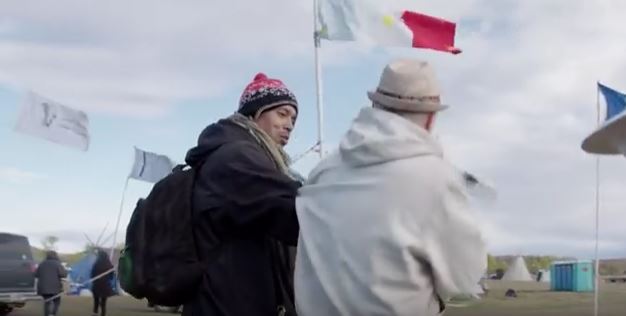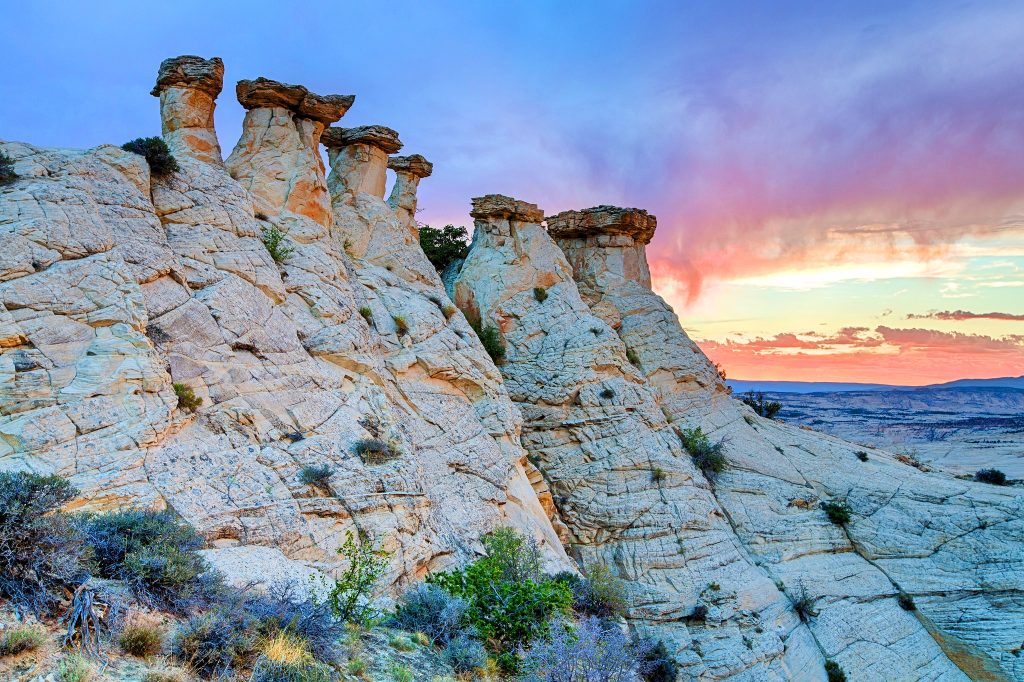The Dakota Access Pipeline demonstrations have been going on for nearly 3 months, with the protests conducted primarily on private property and lead by activists from extreme organizations. Unlike the ranchers who participated in peaceful protests on public property at the Malheur Refuge, and in the streets of Harney County, Oregon, the DAPL protesters are being portrayed as ‘victims’ of big corporations, not ‘domestic terrorists.’

Shocking evidence is coming out of the Dakota Access Pipeline (DAPL) protests that reveals many of the protesters are not peaceful folk from the Standing Rock Sioux Tribe, but are violent thugs, spurred on by paid operatives from outside the area.
The video below, produced by Phelim McAleer of FrackNation, is an extremely uncomfortable reminder that confrontations with the DAPL protesters are putting journalists and law-enforcement officers at risk, and that the protests are less about free speech than they are about halting private energy development on private property.
In the video, Phelim McAleer and his producer try to ask questions of some of the protesters, but are quickly confronted, told “he’s in the wrong the place to ask that kind of stuff,” man-handled as the protesters try to steal their equipment, and forced into their car for fear of assault.
At least 30 agitators surround the car, rock it and attempt to break in while demanding the ‘footage.’ The journalists are clearly fearful for their safety, and you can hear the fear build as McAleer and his producer frantically called local law-enforcement to intercede.
The CNN report by Jessica Ravitz titled “Not all the Standing Rock Sioux are protesting the pipeline” also revealed some disturbing truths about who are among the DAPL protesters, and what their true intentions are. She reports:
They’ve come from Japan, Russia and Germany. Australia, Israel and Serbia. And, of course, there are the allies, not exclusively Native American or indigenous, who’ve flocked here from all corners of the US.
Together they stand in opposition to the Dakota Access Pipeline, a $3.7 billion investment to move 470,000 barrels of domestic crude oil a day through four states. They’re fighting against what they see as corporate greed, an environmental threat and an assault on sacred land.
Demonstrating is their proud daily work.
The Standing Rock Sioux call this reservation home, and many are not on the frontlines of this months-long, and at times violent, protest. With no end in sight, what does it mean to them? And are they even united in their support?
The answer to that last question: Not even close. W
ishing they’d go home.
Not only are the majority of protesters not from the Standing Rock Sioux reservation, many of the tribal members who live there want the pipeline to be built, along with the jobs it will bring.
Having camped out on private property, the DAPL protesters have been in contact with law-enforcement almost every day, and riots and destruction of private property have ensued. According to a report in the Huffington Post:
Fong, a spokeswoman for the North Dakota Department of Emergency Services, confirmed the bean bags and said police had used pepper spray. She added that protesters had thrown rocks and debris and had torched some construction equipment.
There have been “a handful of minor injuries,” according to Fong, speaking before the shooting.
Kirchmeier said in an earlier statement that he was compelled to act because the protesters hadn’t left the site on Wednesday.
“I can’t stress it enough: This is a public safety issue,” Kirchmeier said. “We cannot have protesters blocking county roads, blocking state highways or trespassing on private property.”
The sheriff’s department announced it was also dismantling a roadblock on a highway set up by the group of Native Americans and environmental activists. A variety of local and state law enforcement agencies have sent officers to support the department, Kirchmeier said.
The Dakota Access Pipeline demonstrations have been going on for nearly 3 months, with the protests conducted primarily on private property and lead by extremists activists from all over the world. Unlike the ranchers who participated in peaceful protests on public property at the Malheur Refuge, and in the streets of Harney County, Oregon, media are portraying the DAPL protesters as ‘victims’ of corporate greed, not ‘domestic terrorists.’ But in the McAleer video, it’s easy to feel the terror that comes when rabid agitators use intimidation and physical confrontation in an effort to silence journalists who ask questions about who the protesters are are and what they want from their demonstrations.

Free Range Report



